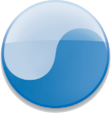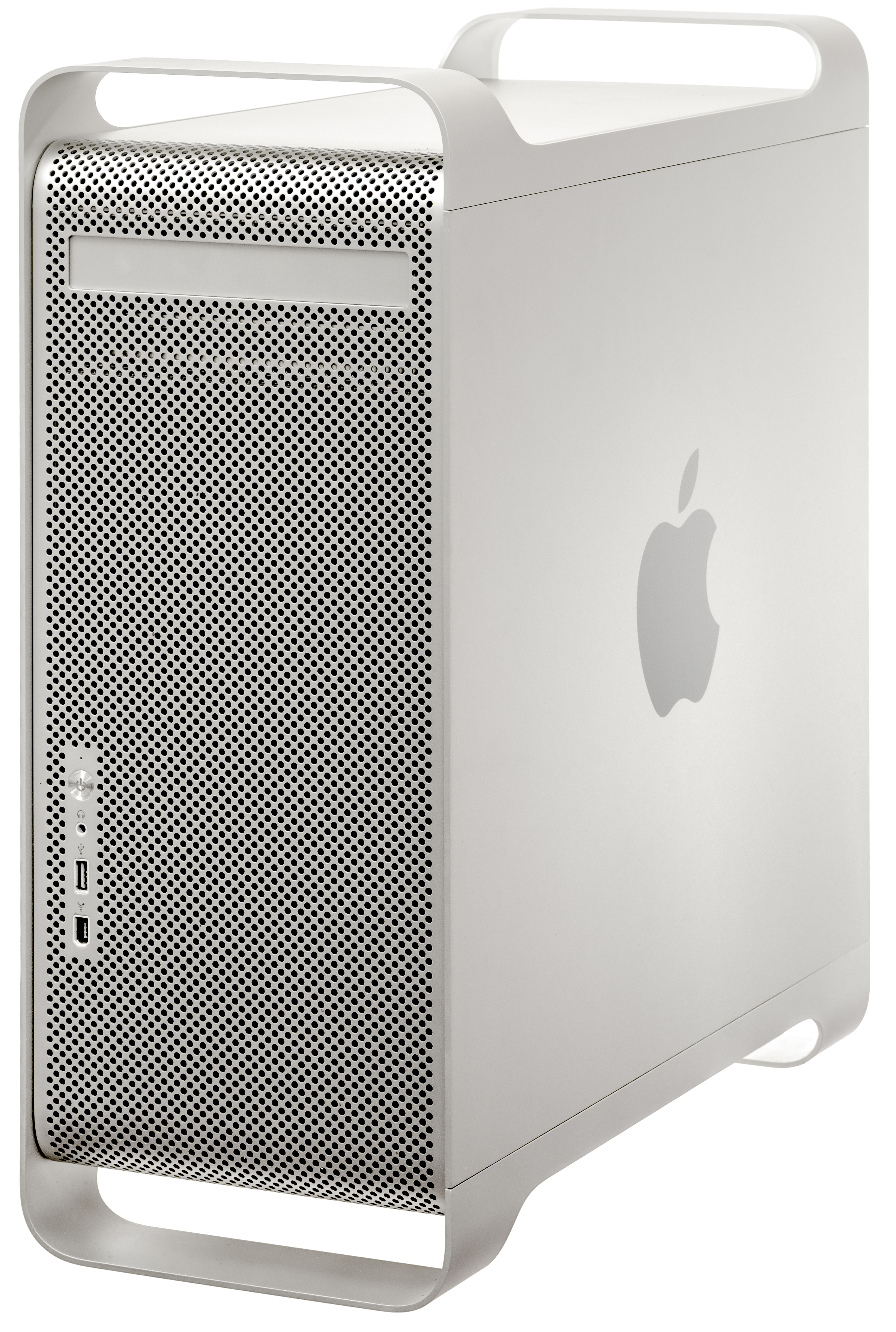|
Rosetta (binary Translation Software)
Rosetta is a dynamic binary translator developed by Apple Inc. for macOS, an application compatibility layer between different instruction set architectures. It enables a transition to newer hardware, by automatically translating software. The name is a reference to the Rosetta Stone, the artifact which enabled translation of Egyptian hieroglyphs. The first version of Rosetta was introduced in 2006 in Mac OS X Tiger as part of the Mac transition from PowerPC processors to Intel processors, allowing PowerPC applications to run on Intel-based Macs. Support for Rosetta was dropped with Mac OS X Lion (10.7) in 2011. Rosetta 2 was introduced in 2020 as a component of macOS Big Sur, and as part of the Mac transition from Intel processors to Apple silicon, allowing Intel applications to run on Apple silicon-based Macs. Most Rosetta 2 features will be removed from macOS with version 28 in 2027. Background Macintosh has used CPUs with several different instruction set architecture ... [...More Info...] [...Related Items...] OR: [Wikipedia] [Google] [Baidu] |
Apple Inc
Apple Inc. is an American multinational corporation and technology company headquartered in Cupertino, California, in Silicon Valley. It is best known for its consumer electronics, software, and services. Founded in 1976 as Apple Computer Company by Steve Jobs, Steve Wozniak and Ronald Wayne, the company was incorporated by Jobs and Wozniak as Apple Computer, Inc. the following year. It was renamed Apple Inc. in 2007 as the company had expanded its focus from computers to consumer electronics. Apple is the largest technology company by revenue, with billion in the 2024 fiscal year. The company was founded to produce and market Wozniak's Apple I personal computer. Its second computer, the Apple II, became a best seller as one of the first mass-produced microcomputers. Apple introduced the Lisa in 1983 and the Macintosh in 1984, as some of the first computers to use a graphical user interface and a mouse. By 1985, internal company problems led to Jobs leavin ... [...More Info...] [...Related Items...] OR: [Wikipedia] [Google] [Baidu] |
Macintosh
Mac is a brand of personal computers designed and marketed by Apple Inc., Apple since 1984. The name is short for Macintosh (its official name until 1999), a reference to the McIntosh (apple), McIntosh apple. The current product lineup includes the MacBook Air and MacBook Pro laptops, and the iMac, Mac Mini, Mac Studio, and Mac Pro desktops. Macs are currently sold with Apple's UNIX-based macOS operating system, which is Proprietary software, not licensed to other manufacturers and exclusively Pre-installed software, bundled with Mac computers. This operating system replaced Apple's original Macintosh operating system, which has variously been named System, Mac OS, and Classic Mac OS. Jef Raskin conceived the Macintosh project in 1979, which was usurped and redefined by Apple co-founder Steve Jobs in 1981. The original Macintosh 128K, Macintosh was launched in January 1984, after Apple's 1984 (advertisement), "1984" advertisement during Super Bowl XVIII. A series of increment ... [...More Info...] [...Related Items...] OR: [Wikipedia] [Google] [Baidu] |
AppleInsider
The Apple community consists of the users, media, and third party companies interested in Apple Inc. and its products. They discuss rumors, future products, news stories, and support of Apple's products. Apple has a devoted following, especially for the Apple II, Mac (computer), Mac, iPod, iPhone, and luminary staff members. The personal computer revolution, mixed with Apple's Vertical integration#Apple, vertical integration of its products and services, has increased popularity. Apple's corporate policy of extreme secrecy about future products intensify interest in the company's activities. Magazines Before the popular use of the internet, early Apple-related publications were available in traditional print media form, often but not always moving later to online publication. '' MacLife'' (stylized as ''Mac, Life'') is a San Francisco-based American publication, originally known as ''MacAddict'' between September 1996 and February 2007. Published by Future US, it started as ... [...More Info...] [...Related Items...] OR: [Wikipedia] [Google] [Baidu] |
Mac OS X Snow Leopard
Mac OS X Snow Leopard (version 10.6) (also referred to as OS X Snow Leopard) is the seventh major release of macOS, Apple's desktop and server operating system for Macintosh computers. Snow Leopard was publicly unveiled on June 8, 2009, at Apple’s Worldwide Developers Conference. On August 28, 2009, it was released worldwide, and was made available for purchase from Apple's website and retail stores at the price of $29 USD for a single-user license. As a result of its low price, initial sales of Snow Leopard were significantly higher than its predecessors, which had prices starting at $129 USD. The release of Snow Leopard came nearly two years after the launch of Mac OS X Leopard, the second longest time span between successive Mac OS X releases (the time span between Tiger and Leopard was the longest). The goals of Snow Leopard were improved performance, greater efficiency and the reduction of its overall memory footprint, unlike previous versions of Mac OS X which focused ... [...More Info...] [...Related Items...] OR: [Wikipedia] [Google] [Baidu] |
Graphical User Interface
A graphical user interface, or GUI, is a form of user interface that allows user (computing), users to human–computer interaction, interact with electronic devices through Graphics, graphical icon (computing), icons and visual indicators such as secondary notation. In many applications, GUIs are used instead of text-based user interface, text-based UIs, which are based on typed command labels or text navigation. GUIs were introduced in reaction to the perceived steep learning curve of command-line interfaces (CLIs), which require commands to be typed on a computer keyboard. The actions in a GUI are usually performed through direct manipulation interface, direct manipulation of the graphical elements. Beyond computers, GUIs are used in many handheld mobile devices such as MP3 players, portable media players, gaming devices, smartphones and smaller household, office and Distributed control system, industrial controls. The term ''GUI'' tends not to be applied to other lower-displa ... [...More Info...] [...Related Items...] OR: [Wikipedia] [Google] [Baidu] |
QuickTransit
QuickTransit was a cross-platform virtualization program developed by Transitive Corporation. It allowed software compiled for one specific processor and operating system combination to be executed on a different processor and/or operating system architecture without source code or binary changes. QuickTransit was an extension of the Dynamite technology developed by the University of Manchester Parallel Architectures and Languages research group, which now forms part of the university's Advanced Processor Technologies research group. Silicon Graphics announced QuickTransit's first availability in October 2004 on its Prism visualization systems. These systems, based on Itanium 2 processors and the Linux operating system, used QuickTransit to transparently run application binaries compiled for previous SGI systems based on the MIPS processor and IRIX operating system. This technology was also licensed by Apple Computer in its transition from PowerPC to Intel (x86) CPUs, start ... [...More Info...] [...Related Items...] OR: [Wikipedia] [Google] [Baidu] |
Fat Binary
A fat binary (or multiarchitecture binary) is a computer executable program or library which has been expanded (or "fattened") with code native to multiple instruction sets which can consequently be run on multiple processor types. This results in a file larger than a normal one-architecture binary file, thus the name. The usual method of implementation is to include a version of the machine code for each instruction set, preceded by a single entry point with code compatible with all operating systems, which executes a jump to the appropriate section. Alternative implementations store different executables in different forks, each with its own entry point that is directly used by the operating system. The use of fat binaries is not common in operating system software; there are several alternatives to solve the same problem, such as the use of an installer program to choose an architecture-specific binary at install time (such as with Android multiple APKs), selecting an archi ... [...More Info...] [...Related Items...] OR: [Wikipedia] [Google] [Baidu] |
Mac OS Nanokernel
The Mac OS nanokernel is an operating system kernel that serves as the basis of most PowerPC based system software versions 7 through 9 of the classic Mac OS, predating Mac OS X. The initial revision of this software is a single tasking system which delegates most tasks to an emulator running the Motorola 68000 series (68k) version of the operating system. The second major revision supports multitasking, multiprocessing, and message passing, and would be more properly called a microkernel. Unlike the 68k-derived Mac OS kernel running within it, the PowerPC kernel exists in a protected memory space and executes device drivers in user mode. The nanokernel is very different from the Copland OS microkernel, although they were created in succession with similar goals. System 7.1.2 – Mac OS 8.5.1 The original nanokernel, and the tightly integrated Mac 68k emulator, were written by emulation consultant Gary Davidian. Its main purpose is to allow the existing Motorola 68k ver ... [...More Info...] [...Related Items...] OR: [Wikipedia] [Google] [Baidu] |
System 7
System 7 (later named Mac OS 7) is the seventh major release of the classic Mac OS operating system for Macintosh computers, made by Apple Computer. It was launched on May 13, 1991, to succeed System 6 with virtual memory, personal file sharing, QuickTime, TrueType fonts, the Force Quit dialog, and an improved user interface. It was code-named "Big Bang" in development and the initial release was named "The System" or "System" like all earlier versions. With version 7.5.1, the name "Mac OS" debuted on the boot screen, and the operating system was officially renamed to Mac OS in 1997 with version 7.6. The Mac OS 7 line was the longest-lasting major version of the Classic Mac OSes due to the troubled development of Copland, an operating system intended to be the successor to OS 7 before its cancellation and replacement with Mac OS 8. Development By 1988, the Macintosh had been on the market for four years. Some aspects of the operating system were beginning to fall behind ... [...More Info...] [...Related Items...] OR: [Wikipedia] [Google] [Baidu] |
Power Macintosh
The Power Macintosh, later Power Mac, is a family of personal computers designed, manufactured, and sold by Apple Inc., Apple Computer, Inc as the core of the Mac (computer), Macintosh brand from March 1994 until August 2006. Described by ''Macworld'' as "the most important technical evolution of the Macintosh since the Macintosh II, Mac II debuted in 1987", it is the first computer with the PowerPC CPU architecture, the flagship product of the AIM alliance. Existing software for the Motorola 68040, Motorola 68k processors of previous Macintoshes do not run on it natively, so a Mac 68k emulator is in System 7.1.2. It provides good compatibility, at about two-thirds of the speed of contemporary Macintosh Quadra machines. The Power Macintosh replaced the Quadra and was initially sold in the same enclosures. Over the next twelve years, it evolved through a succession of enclosure designs, a rename to "Power Mac", five major generations of PowerPC chips, and a great deal of press co ... [...More Info...] [...Related Items...] OR: [Wikipedia] [Google] [Baidu] |



